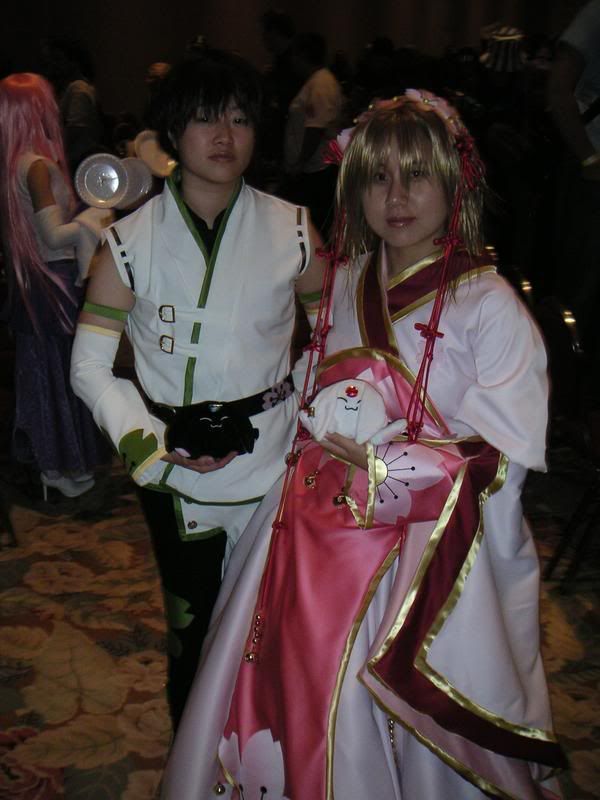

Although I was a big fan of anime in the mid-eighties, when no legally-translated anime was available commercially, uncut, in America, I dropped out of anime fandom in the early nineties. That's when companies here were first selling unedited anime through the home-video market, albeit through overpriced videocassettes; and in Japan, most series were uninspired imitations of previous series. I started following it again in the late '90's, when more quality anime was (a) being made in Japan and (b) being translated and sold here -- particularly with the advent of the DVD.
Which is why I want to bring up two anime series I've finished that managed to go far off the various beaten paths most anime treads. Just as most American TV shows tend to follow set formulae, much of anime follows the giant-robot, mysterious-transfer-student, or Shonen Jump formats. (The latter -- although followed by such excellent series as BLEACH, NARUTO, and ONE PIECE -- invariably follows a young man who has unrealistically high goals; is viewed as an underdog; wins several apparently unwinnable challenges; meets some foe he cannot overcome; goes through "special training"; is locked into some kind of tournament or interminable fight where he must face off against several foes; and, well, it goes on and on . . . )
Both series are not only striking from a visual and storytelling standpoint; both create their own mythologies, and strike out on their own paths.
One of the series is HAIBANE RENMEI, a 13-episode anime which was released on DVD here but not broadcast on American TV. The series is written by artist Yoshitaka ABe, a painter trained in classical Japanese painting, and based on ABe's self-published comic book (dojinshi) series.
The best analogy I can think of for this story is a kinder, gentler, more spiritual THE PRISONER. In a village that looks vaguely 20th-Century European, people --the Haibane -- who once existed in the outside world (and who may have died young) are reborn from seed pods. They have wings like angels, but the wings gradually emerge from their backs as if the backs were giving birth. They have halos, but the halos are forged in circular molds. Their world has non-angel-like people, but they seem to exist to protect the Haibane. The world is bound by all sorts of arcane rules. The story follows Rekka, a Haibane, from her birth in the village through her struggles to expiate her guilt for some unknown sin she committed in her previous life.
It's an emotional story -- and in the central portion, where Rekka becomes depressed, the story cannot help but become depressing. But the creator intended it to reflect the process of salvation from the pits of despair; and the story resonates soulfully. Plus, it's beautiful to look at -- although other character designers worked on the anime, it reflects the watercolor look of ABe's art.
WOLF'S RAIN is a 30-episode SF-Fantasy series that is much more violent and story-oriented than HAIBANE RENMEI. It was broadcast in Japan in 2003 and 2004; and on America's Cartoon Network during 2004. Yet like HR, it invents its own rich mythology, one influenced by Eastern, European, and Native American beliefs.
In a future (?) where "Nobles" govern, hording technology, and wolves are vitally important, a Noble sets out to exterminate wolves. The wolves escape oblivion by adopting the ultimate disguise: They hypnotize the human eye into seeing them as humans. The illusion is complete to the extent that the wolves are able to talk to people. The anime constantly shifts between showing the main pack as wolves and as a group of inhumanly graceful teenage boys. In one particularly interesting storyline, a wolf-hunter's dog discovers she is part wolf; and as soon as she does, people see her as a stylishly-dressed, tousled-haired young woman. The story (which may be more complicated than it has to be) deals with the possible end of this future, and the wolves' search for "Paradise," guided by a girl who has seemingly been cloned from a flower (one of the impossibilities that the plot glides over without much explanation.)
As with HR, the story gets emotional -- particularly near the end -- and manages to lead the viewer down paths that steer around cliche.
The above images are copyrighted by the respective copyright holders.















